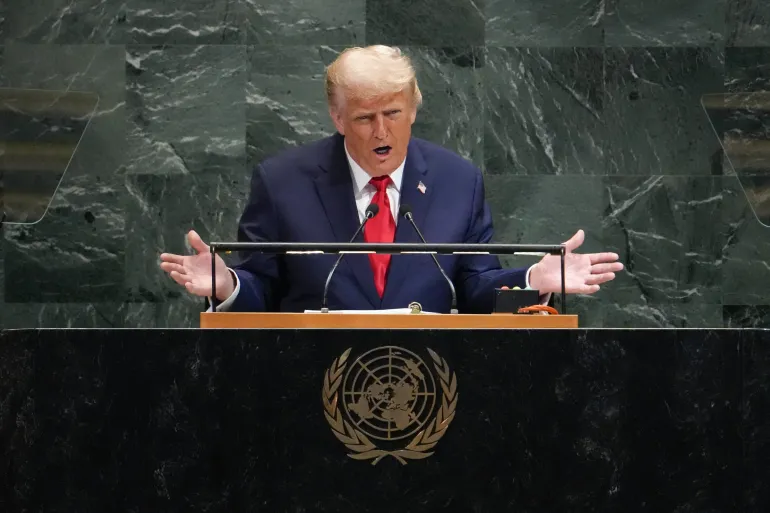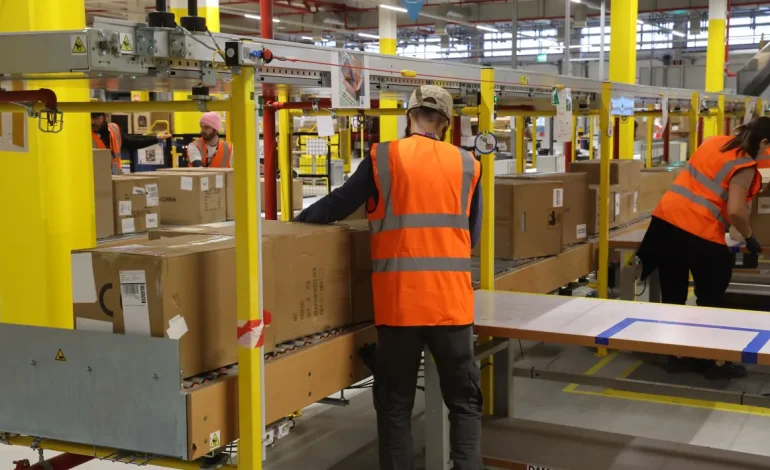Amazon has announced the deployment of its one millionth warehouse robot, a milestone that underscores the company’s growing reliance on automation across its global logistics network.
This development, accompanied by the launch of a new AI coordination system, highlights both the company’s continued investment in robotics and the broader trend of increasing workplace automation.
According to Scott Dresser, vice president of Amazon Robotics, the milestone solidifies Amazon’s role as the world’s largest manufacturer and operator of mobile robotics. The company’s robots are now deployed across more than 300 facilities worldwide, performing tasks ranging from transporting inventory to assisting in packaging and sorting.
Central to the latest expansion is “DeepFleet,” a newly introduced generative AI model designed to optimize the movement of Amazon’s robot fleet. The company estimates that DeepFleet will reduce robot travel time by 10%, improving both the speed and cost-efficiency of order fulfillment.
Amazon began integrating robotics into its fulfillment operations in 2012, following its acquisition of Kiva Systems. Since then, the role of robotics has grown significantly, with robots now lifting heavy inventory, moving shelves, and collaborating with human employees in real-time.
The expansion of robotics has raised ongoing concerns about job displacement, particularly in warehouse and factory settings. A Pew Research survey earlier this year found that both AI experts and the public view manufacturing and logistics workers as among the most vulnerable to automation.
In response, Amazon has emphasized the complementary role of robotics in its operations. Dresser noted that the robots are intended to handle repetitive and physically demanding tasks, freeing human workers to focus on higher-skilled roles. He cited Amazon’s new fulfillment center in Shreveport, Louisiana, which reportedly increased hiring by 30% for roles in engineering, maintenance, and technical operations.
Still, Amazon CEO Andy Jassy acknowledged in a recent interview that technological advancements—including AI—are likely to lead to fewer people doing some tasks currently performed by humans. He added, however, that the company will continue to invest in and hire for emerging fields like robotics, AI development, and cloud computing.
Amazon’s data shows significant productivity improvements since incorporating automation. The average number of employees per facility has declined, while the volume of packages handled per worker has increased sharply. The company reports that 75% of its global deliveries now involve robotic assistance in some form.
Some workers have transitioned into new roles as a result of these changes. For example, former warehouse employees have moved into higher-paying jobs as robot supervisors and system monitors. Amazon says it has retrained over 700,000 workers globally to fill such roles.
The news comes amid a wave of automation-related job reductions across the tech industry. Layoffs.fyi reports that over 150,000 tech employees were laid off last year, and a recent World Economic Forum report suggests nearly half of US employers plan to reduce staffing due to AI.
Despite this, Amazon maintains that its use of robotics has not only improved efficiency but also opened up new career paths. The company continues to explore advanced technologies, including humanoid robots that may one day respond to voice commands and perform more complex tasks.
With input from CNBC and New York Post.










The latest news in your social feeds
Subscribe to our social media platforms to stay tuned